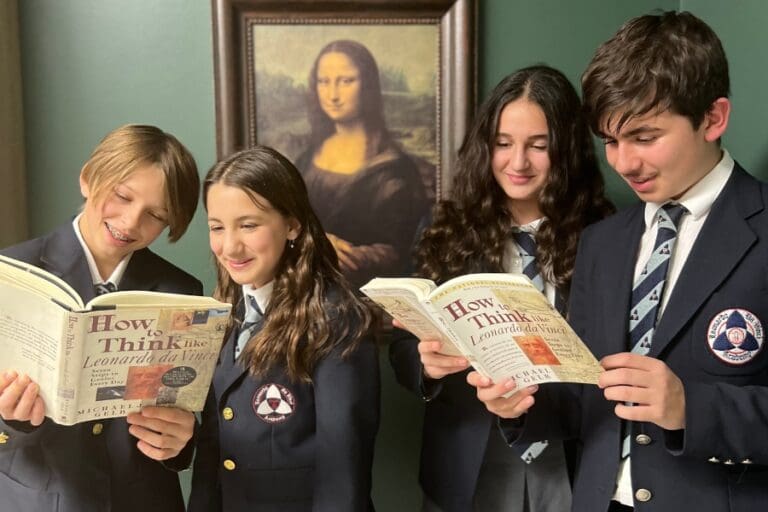THINKING LIKE LEONARDO
From preschool to Grade 8 teachers of the Leonardo Da Vinci Academy employ “Seven Da Vincian Principles” to help students explore and cultivate their own creativity and thinking skills. By using strategies inspired by Leonardo Da Vinci children are encouraged to develop their full potential. Along with a heightened appreciation of the world, areas of development that are promoted include: problem solving, creative thinking, self-awareness, and the balancing of mind and body.
In his book How To Think Like Leonardo, author Michael J. Gelb lays the framework for following Leonardo’s example. In his book Gelb describes Seven Da Vincian Principles as a foundation for lifelong learning. These were adapted by LDVA as a framework for living and learning. and serve as guiding principles for teachers, students and parents.

The Seven Da Vincian Principles for Lifelong Learning
1. Curiosità (Curiosity)
An insatiably curious approach to life and an unrelenting quest for continuous learning.
2. Dimostrazione (Perseverance)
A commitment to test knowledge through experience, persistence, and a willingness to learn from mistakes.
3. Sensazione (Sensations – Mindfulness)
The refinement of all the senses to enliven experience, foster awareness, and bond to the natural world.
4. Sfumato (Mystery)
A willingness to embrace ambiguity, paradox, and uncertainty. (“going up in smoke”)
5. Arte/Scienza (Arts & Science)
The development of the balance between art, logic, and imagination. (“whole-brain” thinking.)
6. Corporalità (Corporality)
The cultivation of grace, ambidexterity, fitness, and poise. Promoting body awareness.
7. Connessione (Connections)
A recognition of and appreciation for the interconnectedness of all things and phenomena. (“systems thinking” and ”pattern recognition”)